Do you have a gate latch that requires some extra security? Whether you need to keep curious kids or animals out of the garden, secure valuables in storage, or just add an extra layer of protection around your home, knowing how to lock a gate latch is essential.
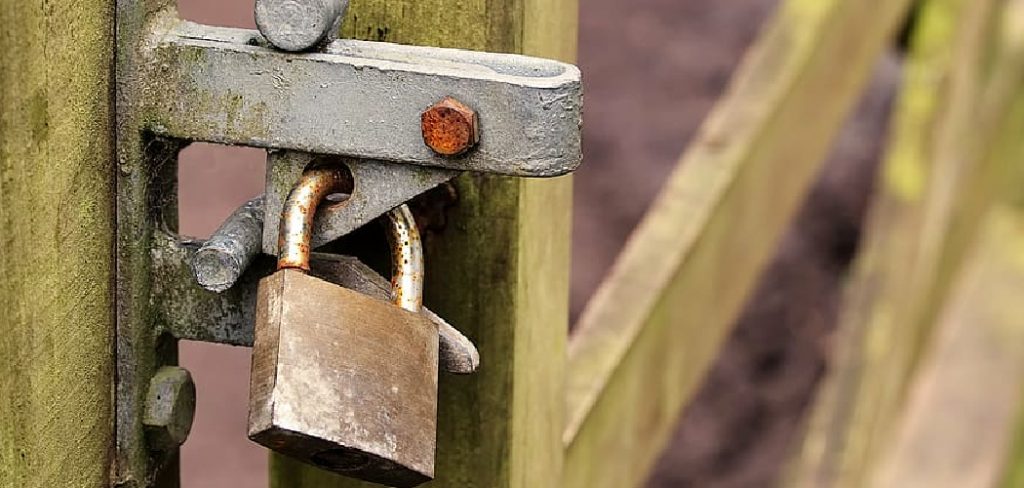
In this post, we’ll teach you the basics behind installing and locking gate latches – from keyed locks and deadbolts to combination locks and beyond – so that you can finally rest assured that your property is safe. With our easy-to-follow instructions, it won’t take long for you to have the peace of mind that comes with added security at your home!
Needed Tools and Materials
Given the wide variety of locks and latches available on the market today, you’ll need to make sure that you cover all your bases when it comes to gathering the necessary tools and materials. Before beginning any project involving a gate latch, here are some of the items you should have on hand:
- A Drill With Various-sized Drill Bits
- A Hammer or Mallet
- A Tape Measure
- An Electric Screwdriver With Phillips and/or Flathead Bits
- Latch Replacement Parts (as needed)
- Lock or Latch of Your Choice
10 Step-by-step Guidelines on How to Lock a Gate Latch
Step 1: Measure the Opening for the Latch
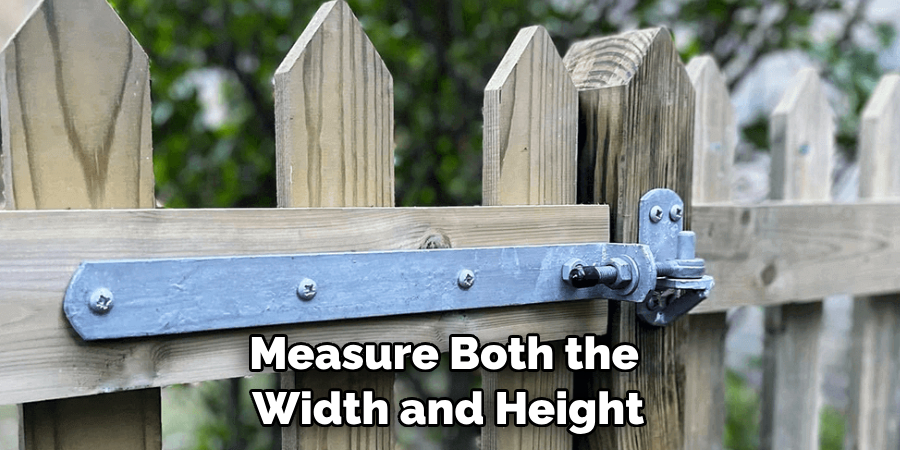
Measure both the width and height of the gate frame, as well as the depth of the frame itself to ensure that you purchase a latch that is appropriately sized. It’s important to remember that the latch should fit snugly into its frame in order to provide maximum security. But don’t worry if you purchase a latch that is slightly too large: you can always adjust the size of the frame opening by using your drill.
Step 2: Install the Latch
In order to install your gate latch, you will need to remove any existing hardware from the frame and prepare it for installation. Depending on what type of materials you are working with, this could involve drilling pilot holes with your drill and hammering nails into place. Then, fasten the latch to the frame using a screwdriver; use counter-sunk screws if possible for extra security.
Step 3: Test the Latch Operation
Once your latch is in place, test it out to make sure that it operates properly. Open and close the gate to make sure that the latch is secure and that the gate opens and closes smoothly. If you find any problems with the latch operation, make adjustments as necessary before proceeding. It’s much easier to fix any issues now than after the lock has been installed.
Step 4: Install Your Lock or Latch of Choice
Now comes the fun part – choosing your lock or latch of choice! The type of locking mechanism you decide to use will depend on what level of security and convenience you are looking for. Keyed locks and deadbolts provide maximum protection, while combination locks are more convenient if you don’t want to worry about losing a key.
Step 5: Drill Pilot Holes for the Lock or Latch
Once you’ve selected your locking mechanism, it’s time to get started with the installation. Using a drill and the appropriate-sized bit, drill pilot holes for the screws or bolts that will secure the lock or latch in place. Make sure that you measure twice and drill once – accuracy is key here! Otherwise, you could end up with a poorly secured lock that doesn’t do its job.
Step 6: Secure the Lock or Latch in Place
Now it’s time to secure the lock or latch in place using a screwdriver. For added security, be sure to use counter-sunk screws if possible – this will make it much harder for burglars to remove your locking mechanism from the frame. You may also need to use your drill and hammer to drive the screws into place if you are working with a particularly hard material.
Step 7: Test Your New Lock or Latch
Once the lock or latch is in place, it’s time to test it out. Open and close the gate several times to ensure that the locking mechanism functions properly and securely. If any adjustments need to be made, make them now before proceeding further. It’s much easier to fix any issues now than after the lock has been installed.
Step 8: Install Any Additional Security Measures (Optional)
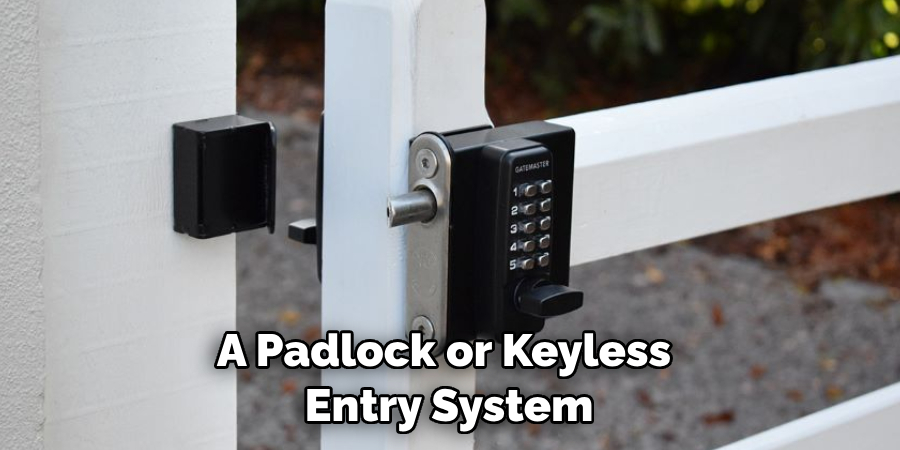
At this point, you may wish to add any additional security measures that you desire – such as a padlock or keyless entry system. Refer to the manufacturer’s instructions for installation details and follow all instructions closely. However, it’s important to remember that any additional security measures should be used in conjunction with a secure gate latch for maximum protection.
Step 9: Inspect Your Gate Latch Regularly
Finally, it is important to inspect your gate latch regularly in order to ensure that it is functioning properly and securely. If you notice any issues with the latch, make sure to repair or replace it as soon as possible – even a minor issue can compromise your home’s security if left unchecked. It is also a good idea to inspect the frame and surrounding area for damage every few months, as weather conditions can sometimes affect the latch’s integrity over time.
Step 10: Enjoy Your Peace of Mind
That’s it – you’re done! Now that you know how to lock a gate latch, you can enjoy the peace of mind that comes with added security around your home. So go ahead and kick back and relax – your property is safe and secure thanks to your own hard work and dedication. Always remember to inspect your gate latch regularly, and you can rest assured that your home is safe and secure.
Following these 10 easy steps will ensure that your gate latch is secure and functioning properly – so you can stay focused on the more important tasks at hand. Whether it’s keeping children or animals out of the garden, storing expensive items away from prying eyes, or simply providing some extra piece of mind around your home, you can trust that your gate is now locked and safe. Now, get out there and enjoy the rest of your day – you deserve it!
Things to Consider
If you’re still unsure about how to lock a gate latch or which type of locking mechanism is best for your needs, there are a few things to consider.
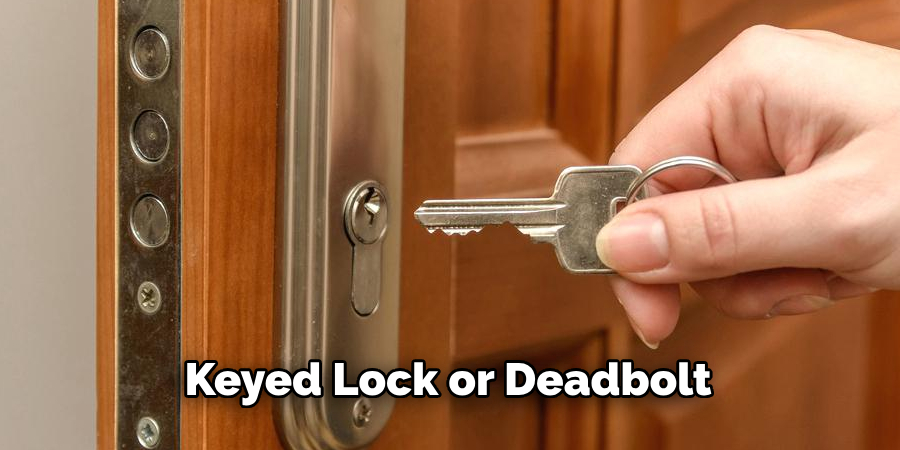
First, think about how often you plan on using the gate and who will have access to it. If you plan on accessing the gate frequently, then a combination lock may be more convenient. On the other hand, if you are looking for maximum security and won’t be accessing the gate often, then a keyed lock or deadbolt may be a better option.
Second, consider your budget – some locks can be quite expensive, especially those with more advanced features such as keyless entry systems. You don’t need to break the bank to ensure that your gate is secure – there are plenty of affordable options out there.
Finally, think about the overall look and feel of your gate – some locks may be more aesthetically pleasing than others. And if you’re a DIYer, there are plenty of tutorials online that can show you how to make your own custom lock or latch.
Frequently Asked Questions
Q1. What Types of Locks and Latches Are Available?
A1. There is a wide variety of locks and latches available – from keyed locks and deadbolts to combination locks and beyond. Be sure to select the right one for your needs – this will depend on what level of security you are looking for, as well as how much convenience you desire.
Q2. How Can I Ensure Maximum Security?
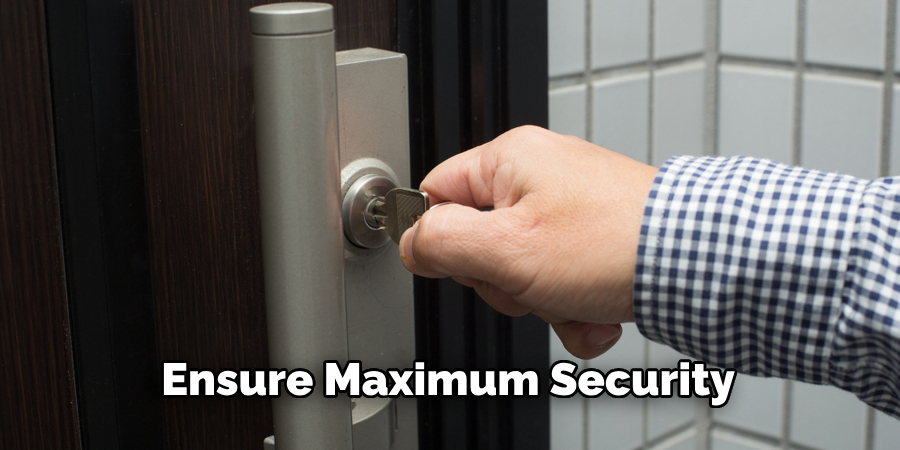
A2. To ensure maximum security when installing a gate latch, it is important to make sure that the latch is properly installed in a snug, secure fit. Additionally, you should use counter-sunk screws when fastening the latch into place and inspect your gate regularly to make sure that it is functioning properly.
Q3. What Tools Do I Need for Installing a Gate Latch?
A3. Before beginning any project involving a gate latch, it is important to make sure that you have the right tools on hand. Most basic installations will require an electric screwdriver with Phillips and/or flathead bits, latch replacement parts (as needed), and the lock or latch of your choice.
Conclusion
Locking a gate latch may seem like a daunting task, but with the use of these tips and tricks, you should be able to take on this project with ease. Not all gate locks are created equal and it’s important to consider which will best fit your security needs. It is possible to install a lock without help, although it might be helpful for a second person to assist.
Once the installation is complete, test it out to make sure that it functions properly and follow up on regular maintenance to ensure that your property is secure at all times. Get creative with your gate latches and get started in how to lock a gate latch making sure your home or business is safe and sound by educating yourself on how to lock the latch today!
About
Safety Fic is a distinguished figure in the world of Diy design, with a decade of expertise creating innovative and sustainable Diy solutions. His professional focus lies in merging traditional craftsmanship with modern manufacturing techniques, fostering designs that are both practical and environmentally conscious. As the author of diy, Safety Fic delves into the art and science of Safety Fic-making, inspiring artisans and industry professionals alike.
Education RMIT University
(Melbourne, Australia) Associate Degree in Design (Safety Fic) Focus on sustainable design, industry-driven projects, and practical craftsmanship. Gained hands-on experience with traditional and digital manufacturing tools, such as CAD and CNC software.
Nottingham Trent University
(United Kingdom) Bachelor’s in diyfastly.com and Product Design (Honors) Specialized in product design with a focus on blending creativity with production techniques. Participated in industry projects, working with companies like John Lewis and Vitsoe to gain real-world insights.
Publications and Impact
In diy, Safety Fic his insights on indoor design processes, materials, and strategies for efficient production. His writing bridges the gap between artisan knowledge and modern industry needs, making it a must-read for both budding designers and seasoned professionals.
